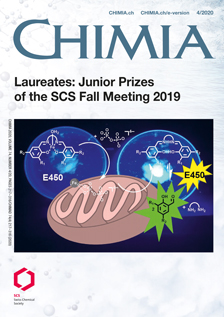The Serendipitous Discovery of a Rose Odorant
DOI:
https://doi.org/10.2533/chimia.2020.247PMID:
32331541Keywords:
Bioactivity, Rose odorant, Total synthesis, SerendipityAbstract
Serendipity has played a role in many groundbreaking scientific discoveries. Key to their identification and exploitation is the ability to recognize the unexpected and invest time trying to understand it. Like any other field of scientific research, total synthesis requires determination and perseverance. When the first-generation route towards a target compound fails, new approaches are developed based on insights gained in the initial studies. Careful analysis of data obtained in a 'failed' approach, e.g. when a reaction did not yield the desired or any expected outcome, can lead to spectacularly improved routes and discoveries that have impact beyond the synthesis of the selected target compound. Serendipity has further led to the identification of intriguing properties that materials or single molecules have, as exemplified by the discovery of electrically conductive polymers. During our total synthesis endeavors towards a complex natural product, we identified a small molecule with interesting olfactory properties, which we decided to investigate further.Downloads
Published
2020-04-29
Issue
Section
Scientific Articles
License
Copyright (c) 2020 Nicole Hauser, Philip Kraft, Erick M. Carreira

This work is licensed under a Creative Commons Attribution-NonCommercial 4.0 International License.
How to Cite
[1]
N. Hauser, P. Kraft, E. M. Carreira, Chimia 2020, 74, 247, DOI: 10.2533/chimia.2020.247.







